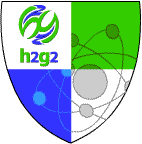GOFAI vs the Engineers: the two (main) approaches to AI
Created | Updated Jun 3, 2002

There are presently two main approaches to Artificial Intelligence: "GOFIA" ("Good Old Fashioned AI" and the Engineering perspective). In this article, these two approaches are introduced, along with some of examples of the research carried out using each approach.
GOFIA ("Good Old Fashioned AI")
"Good Old Fashioned Artificial Intelligence" research consists primarily of the basic research carried out in Artificial Intelligence departments at Universities, much of which aims to use computers to model human and/or animal thought processes.
GOFAI is, if you like, the attempt to create machines capable of independent thought with their own intentions, self-awareness, and thought. One of the problems with this definition is that we do not (and may never) fully understand the nature of any of these capabilities. Not only is it difficult to define what intelligence is and how it works (Crosslink), there is not even an agreed way to determine whether a system (biological or artificial) is intelligent! One proposed test for an intelligent machine is the Turing test (Crosslink), which works on the principle that if a human subjectn should be able to differentiate between a conversation with another human and a non-intelligent machine, but this has posed more questions than it has solved.
One of the key ways in which GOFAI researchers work is alongside other cognitive scientists (Crosslink), designing mental models (Crosslink). Generally, the research process is as follows:
This is a rough idea of GOFAI's contribution to the cognitive science research cycle. More detailed information will eventually be added to the (crosslink) page.
The Engineering Approach
Artificial Intelligence specialists working using the engineering approach take models created by GOFAI and apply them as solutions to real-life problems. A model does not necessarily need to be an accurate account of a human or animal cognitive process in order to be useful in this way (Example??).
Other research areas in AI
Some areas of AI research do not quite fit neatly into the two categories discussed above:
